BUMO: A BLOCKCHAIN PLATFORM CREATING A UBIQUITOUS TRUST NETWORK FOR THE FREE FLOW OF VALUE.
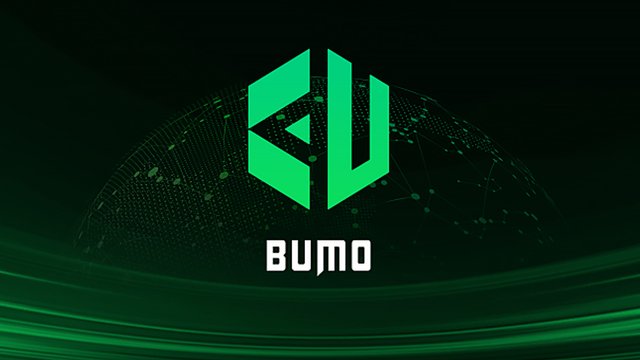
1 – Introduction
2 – Problem definition
2.1 – Performance problem
2.2 – Energy consumption problem
2.3 – Application Threshold
2.4 – Value isolated island
3 – BUMO
3.1 – What is Bumo?
3.2 – Composition of Bumo
3.3 – Bumo, Blockchain technology and smart contracts
3.4 – Bumo token
3.4.1 – Incentive mechanism
3.4.2 – BU Token allocation
4 – Bumo’s solutions to defined problems
4.1 – Isomorphic Interchains (BU orbits)
4.2 – Isomeric Interchains (BU canal)
4.3 – Election/Lottery system for validator nodes, leading to mass adoption of Bumo.
4.4 – BuContract support for JavaScript
5 – Applications and Use Cases
5.1 – Application and Use case in modern car tracking
5.2 – Application and use case in Dapps development.
6 – My video on Bumo
7 – Conclusion
1 - INTRODUCTION
In Greek mythology, Achilles is most notably one of the very few Greek heroes that are as popular as the legend associated with their names. This is mostly due to the famous phrase “Achilles heel”, which was coined from the unique circumstances surrounding his death, and which has come to mean a point of weakness.
Legend has it that to make him physically invulnerable, Achilles’ immortal mother Thetis, dipped the infant Achilles into the river Styx (a river with miraculous powers), holding him by the heel, hence preventing that part of his body (his heel) from attaining invulnerabilitySource.
Achilles was physically stronger and more superior to his peers, conquered territories never imagined possible, brought kings to their knees, and achieved feats that still boggle the mind.
Like Achilles, the blockchain technology has conquered problems once thought of as insurmountable, brought about the abandonment of less effective processes, and has given people control over their data and money, taking such control away from the hands of big banks and governments, leaving the banks and government in scare and bewilderment of what a blockchain future could hold.
Through the blockchain technology, businesses have been able to cause tremendous revolutions in various sectors of life (especially the financial sector where it has drastically reduced the cost and time required for the transfer of money from a sender to a receiver, irrespective of their location). It has also been able to provided lasting solutions to various problems, which include but are not limited to the following: Distributed dynamic networking, Time-ordered and tamper-proof cryptographic books, Consensus mechanism under unified rules, and Intrinsic incentive mechanismSource.
However, just as Achilles had a vulnerable part, an “Achilles heel”, time has proven that popular current blockchain platforms like Bitcoin and Ethereum have points of weaknesses that have hindered them from reaching their full potentials, and hence have indirectly affected the mass adoption of the blockchain technology. Some of these weaknesses include but are not limited to the following: Performance problem, Energy consumption problem, Application threshold, and Value isolated IslandSource.
The bottlenecks listed above have been a hindrance to the free flow of value from one user to the other. As a solution to this problem, there is therefore need for a trustworthy blockchain based network where value can be easily transferred, just the same way information is easily transferred over the internet through the HTTP protocol.
2.- PROBLEM DEFINITION
Achilles’ main weapon of war was his spear. A spear in itself is a weapon with simple design but effective and precise. Its context of usage determines whether people perceive it as
evil or good.
The same applies to the blockchain technology. Just like the spear, in itself it has an effective and precise design, but can be perceived as inefficient depending on the platform in which it is implemented.
Currently, some popular blockchain platforms like Bitcoin and Ethereum, which have implemented the blockchain technology in their design, are experiencing some problems which have hindered the wide spread mass adoption and commercialization of the blockchain technology
These problems are as follows:
- Performance problem
- Energy consumption problem
- Application Threshold
- Value isolated island
2.1 – Performance problem
My first experience with purchasing bitcoin was in 2016. At that time, it took me less than 3 minutes for me to receive my bitcoin in my wallet. I tried carrying a similar bitcoin transaction in 2018 and it took me close to 20 minutes to complete it. I experienced this delay because blockchain platforms like Bitcoin and Ethereum can only handle a few transactions per seconds, hence causing other transactions to queue up.
Because of the large amount of people transacting with these popular cryptocurrencies, coupled with their shortage of transaction processing abilities, these blockchain platforms have been seen as lagging and slow, hence has indirectly affected the commercialization of the blockchain technology.
2.2 – Energy consumption problem
In order to make the Bitcoin transaction process more secure, some security related complex problems have to be solved. These complex problems are solved using computers with large processing capabilities. This procedure is called mining. Those in charge of these computers are called miners. In return for solving these problems, miners get rewarded with bitcoins.
However, the computers that solve these problems consume high amount of energy, which mostly are too costly for ordinary individuals to afford, hence leading to the centralization of the mining industry, since computation power is concentrated in the hands of a few that can afford it.
2.3 – Application Threshold
Just as microsoft office is a software that runs on the windows operating system. In the same way, there are some open source decentralized applications that leverage on the blockchain technology for its operation.
These decentralized applications are user run, rather than being run from a central data center, and users are rewarded with tokens for contributing processing power.
But currently, because of the requirement of professional technical and engineering know-how to develop these applications, the rapidly growing needs for decentralized applications for businesses have not been satisfied. Lack of professional skills have made it difficult to meet this increasing demand.
2.4 – Value isolated island
Just the way an island is separated from other lands, most of the current platforms that have implemented the blockchain technology in their construction, have value and economic systems that are isolated from other platforms, despite the fact that they are all built on the blockchain technology.
This isolation has come with a price – illiquidity. Because of lack of interaction between these platform, the amount of economic activities and hence value of these platforms are limited. These low economic activities have made it difficult to buy and sell the platform tokens, hence limiting the free flow of the value these platforms provide.
From these listed problems, we can therefore see that there is need for a new platform that will provide a trust based network aimed at enabling the tokenization of any asset, and allowing the free flow of value between the parties involved.
3.0 – BUMO
3.1 – What is BUMO?
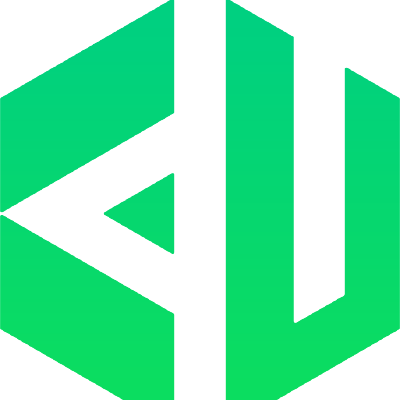
Typing the website https://www.bumo.io into my web browser, I immediately got directed to the Bumo website, where I was able to get all the information I needed on Bumo. This information was sent over the internet to me via the HTTP protocol.
But if instead of information, I want an effective way to receive value (e.g. money from a friend over the internet), that transfer can’t be orchestrated via the HTTP protocol, but rather through a public trustworthy ubiquitous blockchain called Bumo.
By definition, Bumo is a next generation commercial-grade public Blockchain for ubiquitous and trusted value transfer, which is aimed to build a decentralized application ecosystem featured with extensive digital trust, free-flowing value, and public sharing appsSource.
3.2 – Composition of Bumo
From the vision of Bumo which is to create a ubiquitous trust network that will facilitate the free flow of value over the internet using peoples’ smart devices as nodes, we can see that the Bumo network has to connect physical devices like smart phones to the digital network of the blockchain technology. This is achieved through the following components of Bumo:
Node: any intelligent device (e.g. a smart phone) that connects to the Bumo network
Candidate node: Nodes have the opportunity to apply to be candidate nodes. The qualified Nodes get selected as candidate nodes.
Validator nodes: All nodes on the network have the right to vote for the candidate nodes that will become validator nodes. Candidate nodes that have been successful through election/lottery become validator node. Validator nodes are in charge of network accounting and resource management, and are rewarded with network transaction fees.
Consensus mechanism
The election/lottery process involved in moving from Candidate node to Validator node is systematically implemented through a new consensus algorithm BU Firework called “DPoS+PBFT”, which is more efficient than PoW and PoS algorithmsSource. Through this algorithm, precautions are taken to make sure that neither the election/lottery process for validator node nor the resource management process by validator nodes are compromised.
3.3 – Bumo, Blockchain technology and smart contracts
The decentralized and highly secure nature of the Blockchain technology makes it suitable as a trust worthy mechanism, which is a requirement for the transfer of value over the internet. In line with the vision of Bumo, the blockchain technology hence is suitable as the vehicle upon which the Bumo ecosystem will ride to achieve its vision.
Also, built on the blockchain technology is a technology called smart contracts. A smart contract is a self-executing computer protocol with the terms and conditions required for the transfer of value from one person to another. Smart contracts enable the exchange of value in a transparent and trustworthy way.
Once the contract is activated, the computer protocol allocates processing and memory resources to run the contract.
Smart contracts are designed in such a way that they can terminate the contract if the terms and conditions are not met, or if the time for the contract has elapsed. With this, the system is as secure as possible, even with no human input.
In order to fulfil its vision of free flow of value over the internet, Bumo needs smart contracts, since parties involved in the value transfer will most likely not be in the same location. This contract is called BuContract(BUMO Contract)
BuContracts are smart contracts that can be modified by Bumo developers for their particular needs. Through its support for JavaScript as the smart contract development language, ordinary developers are no longer hindered from taking part of the Bumo ecosystem.
These BuContracts will be executed in a virtual environment called BuVM( BUMO Virtual Machine), which will also support C/C++, Python, and other development languages via WebAssembly.
3.4 – Bumo token
When transferring information over the internet, you make use of bandwidth resources which you pay for. In the same way, when transferring value through a blockchain network, you make use of blockchain resources called GAS which you also have to pay for. On the Bumo platform, this gas fee is paid for in the built-in native Bumo token called BU-token (BU for short).
The value of BU is based on two factors:
- The amount of BU token consumed as fuel in the Bumo network.
- Ability to be able to participate in governance of the Bumo community by holding unto BU.
BU token can be applied but is not limited to the following ways:
- GAS: As the fuel required to power transactions on the Bumo blockchain
- Bookkeeping reward: As a reward for validator nodes for their services on the Bumo blockchain
- Community incentive: As an incentive to motivate community developers for the advancement of the platform.
The following are ways to acquire BU tokens:
- Through rewards for services as a validator node
- Transfer of BU between Bumo users
- Exchanging ETH for BU
- Through incentives received from participating s a Bumo community developer.
- Other ways
3.4.1 – Incentive mechanism
We said earlier that the validator node is rewarded with transactions fees for network account and resource management. This transaction fee is the GAS paid in BU, and hence awarded to the validator nodes.
In allocating the transaction fees to the validator nodes, an average allocation is first given, and then the balance is shared according to the amount of validator nodes and block height. The formula for these allocations are as follows:
Average cost incentive = total cost / number of validators
Remaining cost incentive = total cost – average cost * number of validators
Random index = block height % number of validators Source
3.4.2 – BU Token allocation
From the whitepaper, the total coin offering for BU is 1.5 billion. This is broken down as follows:
- A one-time generation of 1 billion tokens when BU will be online
- 500 million tokens to serve as bookkeeping rewards for validator nodes.
For elaborative illustration, the token allocation plan is shown below:
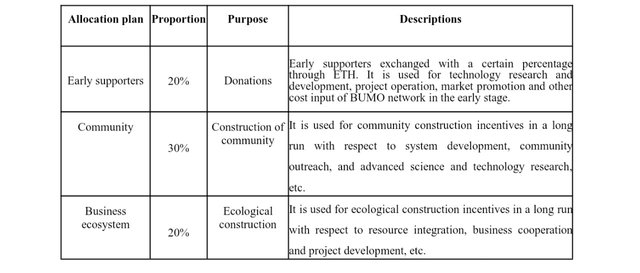

4.0 – BUMO’S SOLUTIONS TO DEFINED PROBLEMS
4.1 – Isomorphic Interchains (BU orbits)
With the increasing number of blockchain users and transactions, coupled with the single chain blockchain design of platforms like Bitcoin and Ethereum, the transaction processing capabilities of these platforms have been limited, leading to poor performances like delay and queuing up of transactions.
To solve this problem, Bumo proposes Isomorphic Interchains (BU Orbits). Rather than using a single chain, BU Orbits will make use of two layers of Mainchain and Childchain. As shown in the image above, the first one is the Mainchain which is usually one in number, while the childchain can be more than one. Childchains can communicate and trade between each other and with the mainchain.
The idea here is that instead of having a single chain do all the tasks of transaction processing, state storage, transaction download, and so on, the transactions can be distributed across different childchains where they are handled independently. When the transactions are completed in the childchains, they are all synchronized in the mainchain.
Which each tasks being handled by a childchain, we can have as much childchains as necessary to handle as much transactions as availbale, hence eradicating the problem of queuing transactions, hence increasing performance of the blockchain.
Also, to increase performance, the Mainchain and Childchain of the BU Orbit makes use of a hybrid consensus algorithm of DPOS+PBFT, instead of the PoW algorithm.Source.
4.2 – Isomeric Interchains (BU canals)
Majority of the present platforms built of the blockchain technology have value and economic systems that are isolated from other platforms, despite the fact that they are all built on the blockchain technology. This isolation has come with a price – illiquidity.
To solve this problem Bumo proposes Isomeric Interchains (BU canal). Like BU Orbit, BU canal consists of two layers of Mainchain and Childchain, but unlike BU Orbit, it is not possible for childchains to communicate and trade between each other. In BU canal, the first layer is the mainchain, and the second layer is the childchain, which is made up of multiple isomorphic/isomeric childchains.
Instead of having blockchain platforms whose nodes are independent of each other hence taking the form of value isolated islands, the BU canal design proposes a scalable structure where there is a free flow of value, assets, and information between childchains through the mainchain. Since childchains can’t directly communicate with each other, but they can communicate with each other indirectly through the mainchain.
4.3 – Election/Lottery system for validator nodes, leading to mass adoption of Bumo
Mining is an activity that requires a huge amount of energy to carryout. This required energy mostly are too costly for ordinary individuals to afford, hence leading to the centralization of the mining industry, since computation power is concentrated in the hands of a few that can afford it.
But through the election/lottery system employed by Bumo in the selection of validator nodes, mining is no longer restricted to monopoly by powerhouses, an atmosphere of fairness and justice is now created where everyone has equal chances.
This level playing ground will foster the mass adoption of the Bumo technology, since all miners now have a platform where they all have an equal chance at being validator nodes.
4.4 – BuContract support for JavaScript
One of the reasons why the demand for business applications have not been satisfied is because of the limited professional technical and engineering skills. Most of the blockchain based applications require rare professional skills to build, hence limiting the availability of the apps.
To reduce this problem, Bumo gives ordinary people access to the Bumo blockchain smart contract technology by supporting the use of JavaScript as a blockchain application development language for building dapps. Since JavaScript is a very popular programming language, this area of app development becomes open to more developers, hence enhancing the mass adoption of the Bumo technology.
5.0 – APPLICATIONS AND USE CASES
5.1 –Application and Use case in modern car tracking
Application
Car tracking is the use of tracking devices to monitor the location of vehicles. Modern tracking devices monitor other car details (e.g. temperature) in addition to the location of the vehicle in real time. This involves huge amounts of data.
Bumo blockchain can help with the processing of these data to verify their authenticity, since it has the capacity to process 10000 transactions per second, with the added properties of scalability and high performance.
Use case
Trakia is a car tracking company owned by Joy. She has enjoyed monopoly of the car tracking market in her country. To stay ahead of the curve, she wants to advance to using car trackers that monitor other vehicle information together with the location of the vehicle, but she was unsure of the blockchain technology to use.
On finding out about Bumo and its ability to securely process 10000 transactions per second, she implements the Bumo technology in the processing of data from trackers, securely verifying the authenticity of the tracker data. Being already in the tracking business, Joy would not have to spend much money on logistics and hardware.
Joy is happy she is able to move her business to the next level, staying ahead of the curve.
5.2 – Application and Use case in Dapps development
Application
Dapps are open source applications built on the blockchain technology. Currently, developing these applications require professional and engineering skills that are not common, hence limiting the development of that sector.
Bumo on the other hand has made it possible for ordinary developers to be able to build these applications, by supporting the use of JavaScript as the development language. With this, more developers can start developing dapps, hence enriching the blockchain ecosystem as a whole.
Use case
Phil is an application developer with years of experience and expertise with the JavaScript language. He has heard about dapps, and researched about them, but got discouraged when he found out that he had to learn a new language to work on dapps.
On finding out about Bumo, Phil’s dreams of building dapps get rejuvenated. He is excited to find out that through the Bumo blockchain, he can use the JavaScript language to build dapps, bringing his experience and expertise in the JavaScript language into the Bumo blockchain.
He starts building dapps with high performance and scalability.
The image below is a further illustration of the application ecology shared by Bumo:
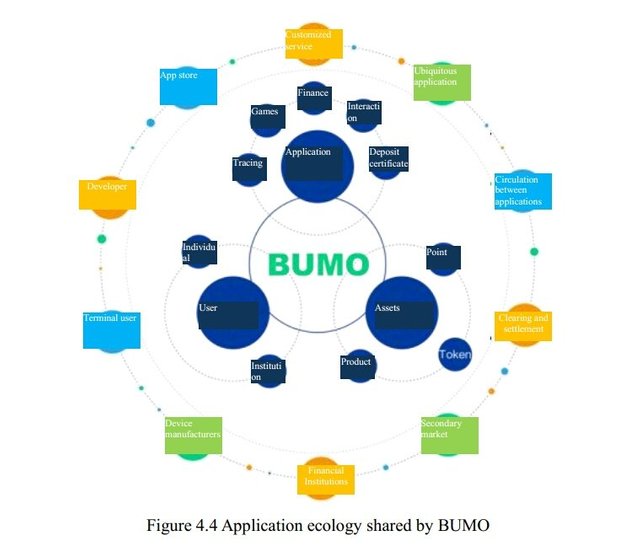
6.0– MY VIDEO ON BUMO
7.0 – CONCLUSION
The blockchain technology is a revolutionary technology. Upon it, various platforms have been built that have provided solutions to various life challenges, especially in the financial sector where cryptocurrencies like bitcoin and ethereum have made the transfer of money cheaper and faster.
But unfortunately, these blockchain platforms have weaknesses that have hindered the mass adoption of the blockchain technology.
Bumo being an ubiquitous trust blockchain platform aims at providing solutions to these weaknesses, while fostering the free flow of value, just the way information flows freely over the internet.
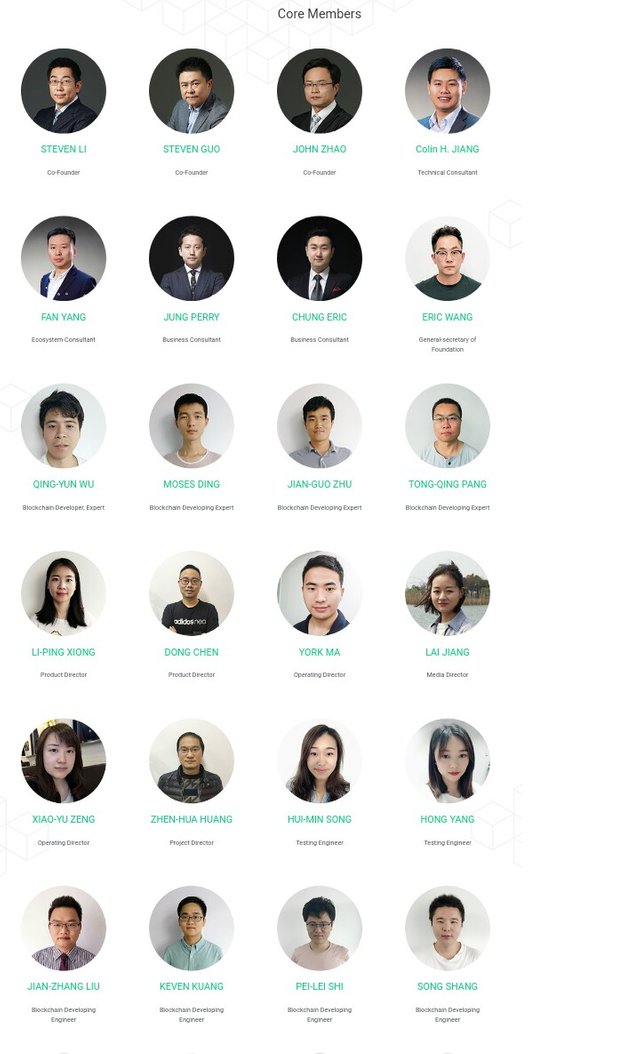
The Bumo team is made up of professionals who are highly experienced in the field of blockchain technology. With a team of such pedigree, you can’t expect anything lesser than the best.
If you need further clarification on any issue with regards to Bumo, just do well to drop your questions in the comment section, and I will promptly attend to it.
For more information on Bumo, you can visit any of the following channels:
. BUMO WEBSITE
• BUMO WHITEPAPER
• BUMO TECHNICAL PAPER
• BUMO WEIBO
• BUMO TELEGRAM
• BUMO FACEBOOK
• BUMO GITHUB
• BUMO REDDIT
• BUMO WALLET
• BUMO TWITTER
To participate in the contest, visit this link
Here is my Twitter link
bumo2018
bumotwitter

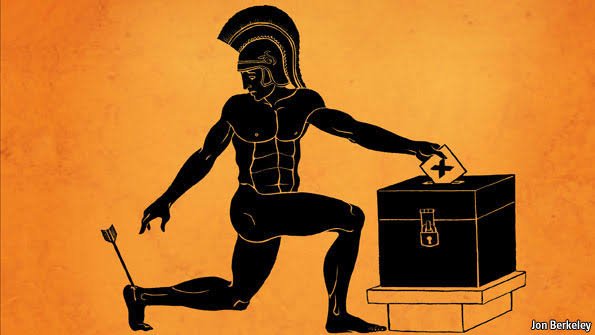




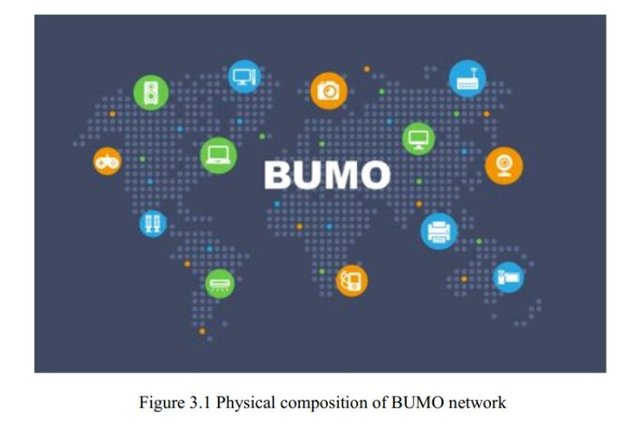
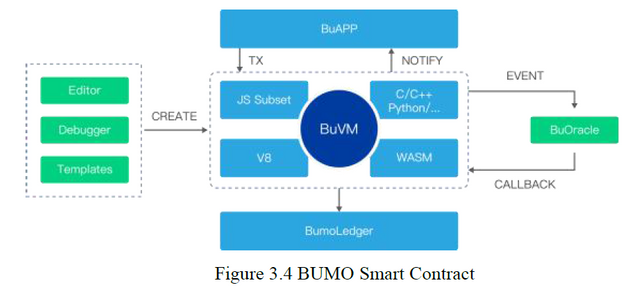
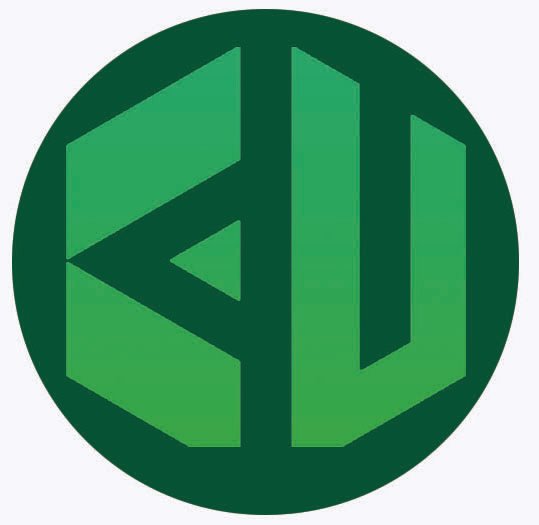
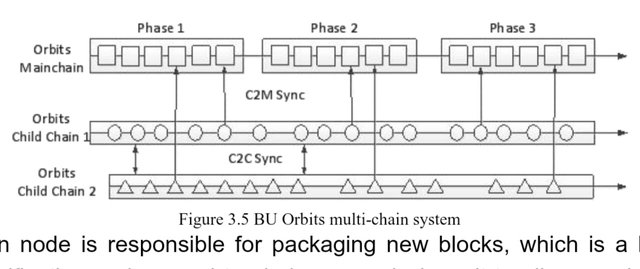
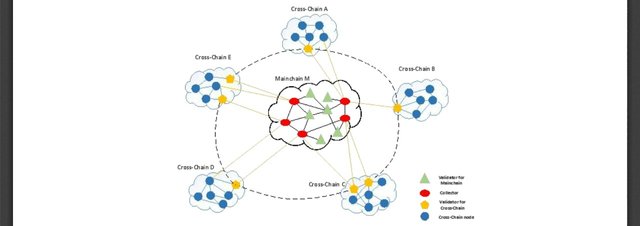
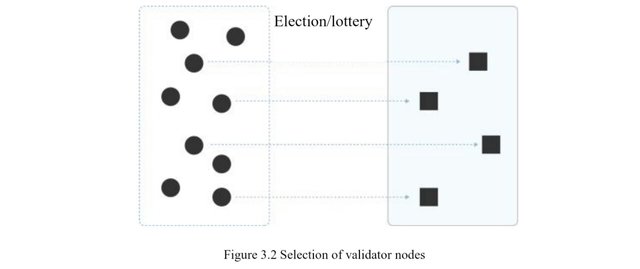

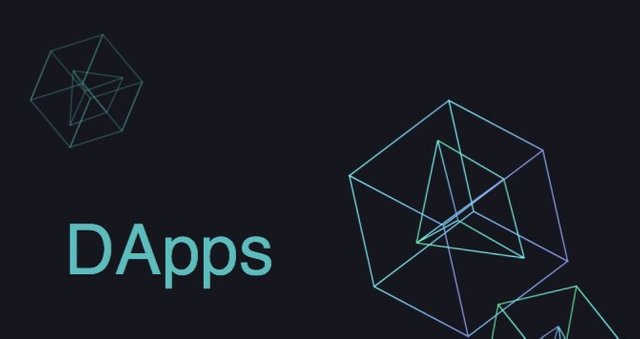
Lol, can't even hate on this article. It's 🔥🔥🔥
😀😀 this got me laughing hard. Thanks @ulqu3
This post has been submitted for the @OriginalWorks Sponsored Writing Contest!
There is also a bonus CateredContent Event to earn additional Steem!
You can also follow @contestbot to be notified of future contests!
You did a wonderful Job, I mus confess.
Congrats!
I'm learning somethings now😊
I tell you bro.
He's good.
The game just got upped😀.
Congrats @lucyc
Thanks a lot @blessedben. 😊
Thanks @ced000 I really appreciate.